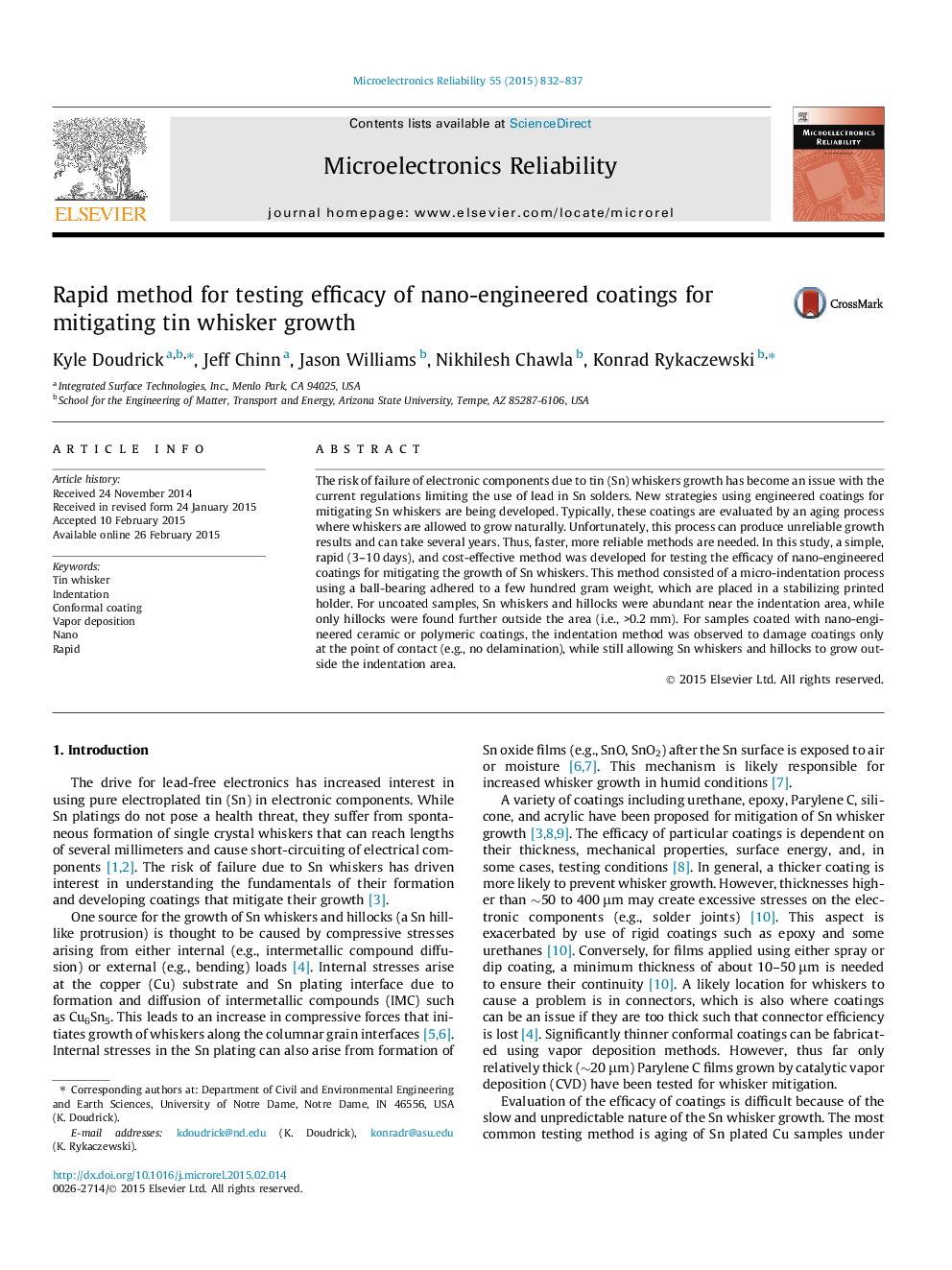| Article ID | Journal | Published Year | Pages | File Type |
|---|---|---|---|---|
| 544792 | Microelectronics Reliability | 2015 | 6 Pages |
•Simple, rapid, and economical indentation method for growing tin whiskers.•Nano-engineered coatings tested for whisker mitigation efficacy.•Indentation damage is localized and does not affect coating performance.•Tin nodules are seeding points for whisker growth.
The risk of failure of electronic components due to tin (Sn) whiskers growth has become an issue with the current regulations limiting the use of lead in Sn solders. New strategies using engineered coatings for mitigating Sn whiskers are being developed. Typically, these coatings are evaluated by an aging process where whiskers are allowed to grow naturally. Unfortunately, this process can produce unreliable growth results and can take several years. Thus, faster, more reliable methods are needed. In this study, a simple, rapid (3–10 days), and cost-effective method was developed for testing the efficacy of nano-engineered coatings for mitigating the growth of Sn whiskers. This method consisted of a micro-indentation process using a ball-bearing adhered to a few hundred gram weight, which are placed in a stabilizing printed holder. For uncoated samples, Sn whiskers and hillocks were abundant near the indentation area, while only hillocks were found further outside the area (i.e., >0.2 mm). For samples coated with nano-engineered ceramic or polymeric coatings, the indentation method was observed to damage coatings only at the point of contact (e.g., no delamination), while still allowing Sn whiskers and hillocks to grow outside the indentation area.
